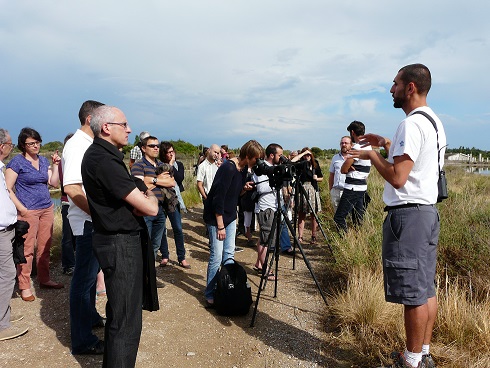 Le séminaire du Labex DRIIHM 2014 s'est tenu à Montpellier les 18 et 19 Juin, sur la thématique de l'observation en écologie globale dans le cadre des OHM. Plus de 70 personnes ont assisté aux échanges et ont été sollicitées pour réfléchir sur les pratiques du ROHM.
Le séminaire du Labex DRIIHM 2014 s'est tenu à Montpellier les 18 et 19 Juin, sur la thématique de l'observation en écologie globale dans le cadre des OHM. Plus de 70 personnes ont assisté aux échanges et ont été sollicitées pour réfléchir sur les pratiques du ROHM.
Pour la première fois dans ce cadre-ci les jeunes chercheurs, doctorants et post-doctorants du LabEx ont été étroitement associés aux échanges. La première matinée leur a été consacrée. L'invité scientifique annuel du réseau, en la personne de Sander Van Der Leew, après une visite des OHM métropolitains, est intervenu sur l'importance de l'acquisition de données et de savoirs dans la compréhension des systèmes complexes.
L'OHM Littoral Méditerranéen était l'hôte de ces deux journées. Le 18 après-midi, ses thématiques de recherche et ses sites d'étude ont ainsi été présentés ex-situ et in situ aux participants. La découverte des Salines de Villeneuve-lès-Maguelone a permis d'échanger autour de la valorisation et la préservation d'un site naturel remarquable et de questionner plus largement les problématiques et enjeux majeurs des lagunes méditerranéennes.
D'un point de vue général, outre les échanges fructueux entre chercheurs, ces journées ont contribué à initier la communauté en devenir des OHM.
Vous trouverez ici l'ensemble des communications présentées lors de ces deux journées d'échange. Pour accéder aux détails des présentations, cliquer sur le titre correspondant.
Trouvez également ici un résumé de la visite autour des lagunes palavasiennes.

